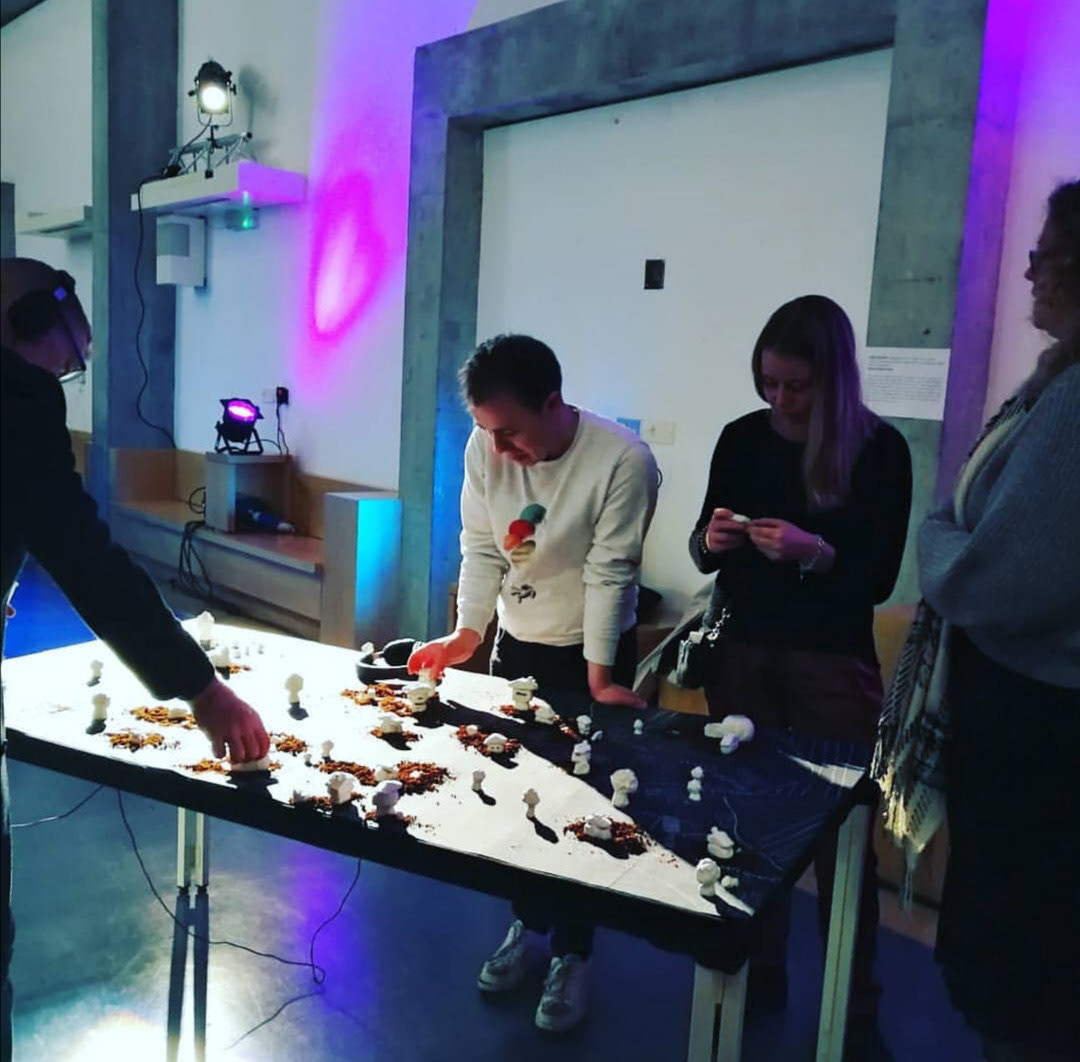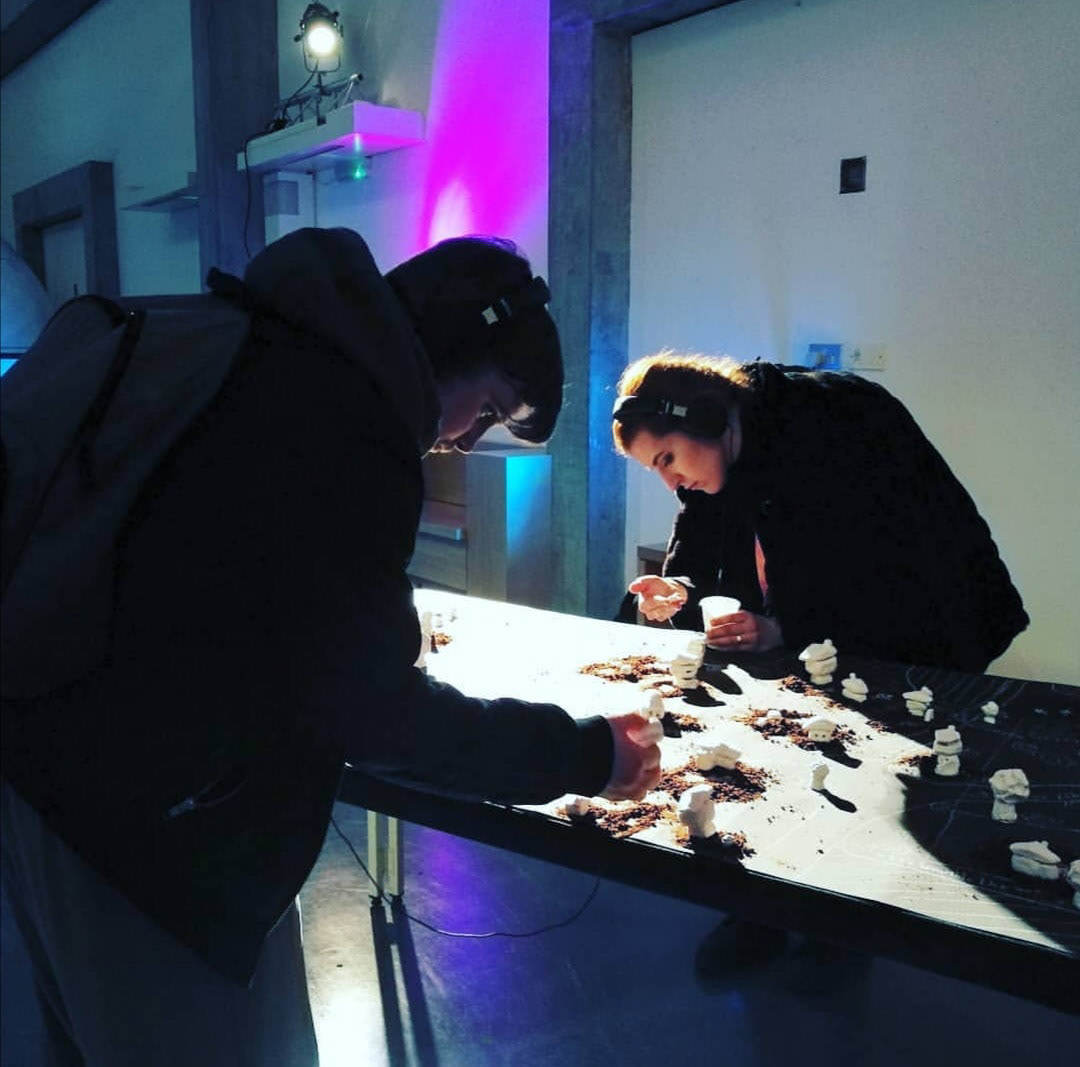'Смъртна Зона', translated into English as 'Death Zone', is an interactive installation piece, exploring that story of THE 'ANGEL MAKERS OF NAGYRÉV', a group of women from Hungary, who between 1914 and 1929 committed a mass murder of 1/3 the population of their village by killing their husbands, lovers, and family members with arsenic.
I love the interactiveness of this piece. encouraging participators to touch and move the pieces, the dirt, participants leaving their own signs for the next person to create a narrative from was at the core of this project.
it was fascinating hearing everyone's interpretations and they were all so diverse and even sometimes, very personal.


Sample audio track: